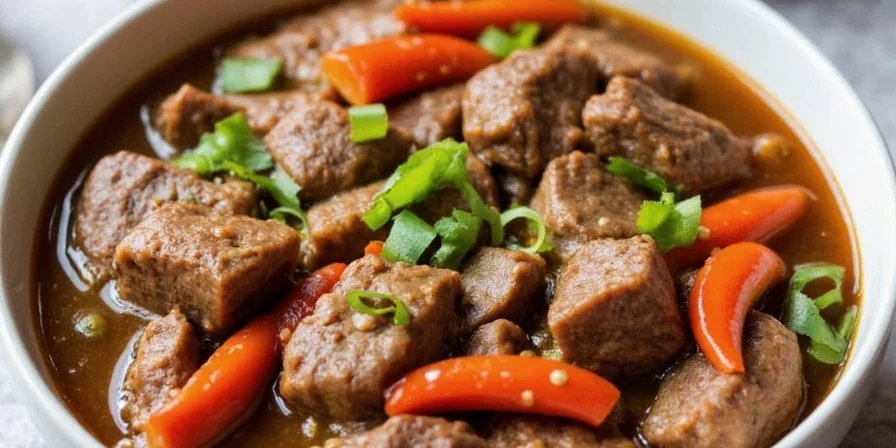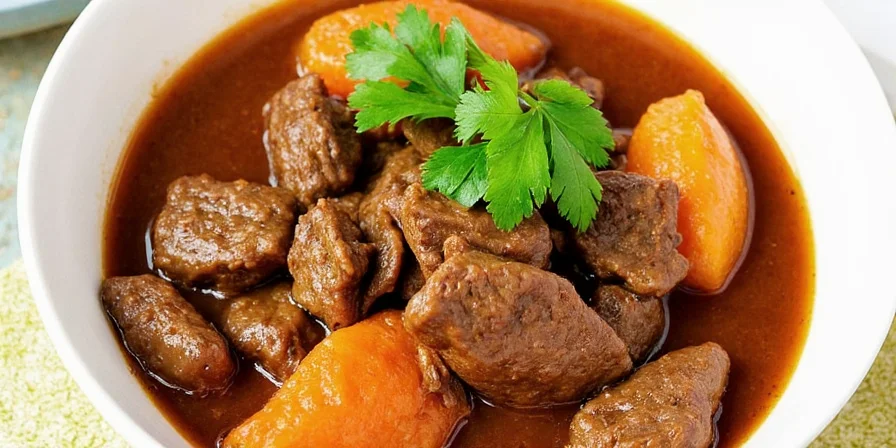Spice Up Your Bowl: Mastering the Art of Vietnamese Beef Stew
Welcome to the aromatic world of Vietnamese Beef Stew—or as locals call it, Lẩu Bò or sometimes Kho Bò. This beloved dish is more than just simmered meat and veggies; it's a flavor-packed journey through centuries of spice tradition in Vietnam. Whether you're a seasoned home cook or a curious foodie, this guide will help you master the spices that make this dish truly unforgettable.
Table of Contents
- What Makes Vietnamese Beef Stew Special?
- The Spice Lineup You Can’t Ignore
- 7 Pro Tips for Perfecting Your Stew
- Deep Dive: Spice Traditions Across Regions
- Pairing Perfection: Sides & Beverages That Complement Your Stew
- Final Thoughts: Make It Yours!
What Makes Vietnamese Beef Stew Special?
If you’ve ever tasted a rich, fragrant bowl of Vietnamese beef stew, you know it’s not your average pot roast. The magic lies in its balance of heat, sweetness, earthiness, and umami—all thanks to an ingenious use of spices and aromatics. From star anise to lemongrass, each ingredient tells a story of trade, tradition, and taste.

The Spice Lineup You Can’t Ignore
Vietnamese cuisine might be known for fresh herbs and light flavors, but when it comes to stews, they play with fire—and by fire, we mean a whole pantry of warming spices. Here’s your essential spice squad:
| Spice | Role in the Dish | Taste Profile |
|---|---|---|
| Star Anise | Adds deep licorice-like sweetness | Warm, sweet, slightly spicy |
| Cinnamon Stick | Brings warmth and complexity | Sweet, woody, slightly citrusy |
| Coriander Seeds | Earthy base note | Dry, citrusy, slightly floral |
| Black Peppercorns | Sharpens other flavors | Pungent, woody, slightly hot |
| Fish Sauce | Salt + depth + umami bomb | Salty, fermented, savory |
| Ginger | Spicy brightness | Peppery, fresh, slightly sweet |
| Lemongrass | Grassy, citrus lift | Floral, lemony, herbal |
Pro Tip: Toast First, Taste Better
Never skip toasting your spices before adding them to the pot! A quick 30 seconds in a dry pan unlocks hidden aromas and intensifies flavor without making things overly spicy.
7 Pro Tips for Perfecting Your Stew
- Brown the Beef First: Maillard reaction = flavor factory. Take time to sear the beef until golden brown.
- Layer Flavors Slowly: Build layers like a chef—start with aromatics, then spices, then liquids and meat.
- Use Coconut Water (Seriously): Adds subtle sweetness and tenderness. Try replacing half your broth with coconut water for extra oomph.
- Don’t Rush the Simmer: Low and slow wins the race. Let it bubble gently for at least 1.5–2 hours.
- Balance Sweet & Salty: Traditional recipes often include rock sugar or palm sugar. Taste and adjust after every 30 minutes.
- Add Vegetables at the End: Root vegetables go in early; leafy greens near the end to avoid mushiness.
- Garnish Like a Local: Fresh Thai basil, sliced chili, lime wedges, and chili-garlic sauce on the side are non-negotiable.

Deep Dive: Spice Traditions Across Regions
Vietnam may be a long, skinny country, but its spice traditions are anything but narrow. Let’s explore how different regions bring their own flair to beef stew:
| Region | Signature Ingredients | Flavor Profile | Unique Technique |
|---|---|---|---|
| Northern Vietnam | Fish sauce, ginger, black pepper | Clean, balanced, subtly spiced | Slow-braised with minimal sweetness |
| Central Vietnam | Shallots, lemongrass, chili | More robust, fiery, and complex | Often served with rice noodles and herbs |
| Southern Vietnam | Coconut milk, tamarind, sugar | Sweet-sour-spicy fusion | Used in dishes like Kho Chanh (lemon stew) |
Historical Fun Fact:
Vietnamese spice blends were heavily influenced by Chinese and Indian traders who passed through the region via the Maritime Silk Road. Star anise, for instance, was originally introduced from China but has now become a staple in Vietnamese kitchens!
Pairing Perfection: Sides & Beverages That Complement Your Stew
No matter how amazing your stew is, it needs good company. Here’s what to serve—and sip—alongside your masterpiece:
- Rice Varieties: Jasmine rice is classic, but try purple sticky rice or turmeric rice for a twist.
- Condiments: Chili-garlic sauce, hoisin sauce, pickled mustard greens, and fish sauce-lime dip.
- Herb Platters: Thai basil, mint, cilantro, and perilla leaves add freshness and crunch.
- Drinks:
- Cold beer (Larue or Saigon Special works great)
- Iced lemongrass tea
- Coconut water
Wine Lovers, Listen Up:
Try a medium-bodied red like Pinot Noir or a crisp white like Riesling if you’re going fancy. Both cut through the richness and highlight the spices beautifully.

Final Thoughts: Make It Yours!
Vietnamese beef stew is more than a recipe—it’s a canvas. Whether you follow tradition closely or like to experiment with new flavors, the heart of this dish lies in the way it brings people together around a steaming pot of goodness.
So next time you're planning a cozy dinner or want to impress guests with global flavors, remember: the right spice can turn a simple stew into a soulful experience. Don't be afraid to tweak, taste, and test. After all, cooking is about storytelling—one bite at a time.
Got Questions? Want More Spice Tips?
Drop your questions in the comments below or share your favorite stew variation. Who knows—we might feature it in our next Global Spice Traditions post!










 浙公网安备
33010002000092号
浙公网安备
33010002000092号 浙B2-20120091-4
浙B2-20120091-4